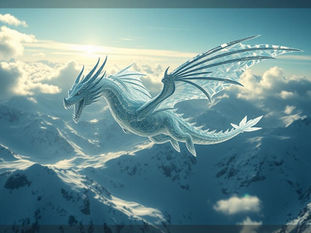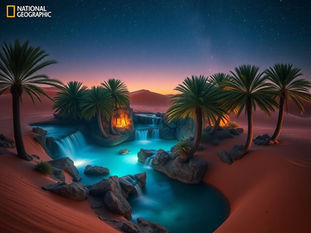
Mastering Midjourney v7: A Beginner's Guide to Prompt Engineering
Apr 21
3 min read
0
0
0

Ready to take your Midjourney skills to the next level? This guide breaks down the essentials of prompt engineering in Midjourney v7, so you can create amazing images with precision. No more blurry potatoes – let's dive in!
Understanding the Basics of Midjourney Prompting
Midjourney uses prompts to create images through a process called diffusion. It starts with random visual noise, called a "seed," and refines it based on your instructions. If you don't give it enough guidance, Midjourney will fill in the gaps with its best guess, so here's what you should remember:
Control all the important details in your prompt to avoid unwanted surprises.
Don't be lazy. Take the time to craft detailed prompts.
Prompts that take too long to process can lead to blending, dropped details, or incoherence. Optimize to get the best results!
Be careful using conversational instructions if you're not in conversational mode.
Full sentences are better! Grammar and punctuation matter because of how Midjourney reads your instructions.
Want to make the most of your Midjourney experience? Check out the Midjourney Automation Suite from TitanXT at TitanXT. It can help automate and enhance your creative process!
Breaking Down Diffusion, Seeds, and Denoising
Let's explore these core concepts:
Diffusion
Midjourney was trained using millions of images and text descriptions. Now, when you enter a prompt, it uses these rules to create an image, step by step. It refines its starting point in waves, making billions of tiny adjustments to the pixels.
Seeds
A seed is a field of random visual noise. Midjourney never starts with a blank canvas. Instead, it uses the seed or an image it already created. Seeds are the random visual noise that Midjourney turns into an image.
Denoising
Denoising is the process of refining the seed. Midjourney gradually changes the value of the pixels until it forms an image based on your prompt and parameters. The prompt is the chisel, used to shape and sculpt visual noise. This continues until it runs out of processing time or it thinks it's done.
Controlling the Canvas: Subject, Background, and Style
To get the images you want, you need to control the whole canvas by specifying your subject, background, and style. If you don't, Midjourney will play it safe and fill in the blanks with whatever it has seen the most in its training data. Instead, tell Midjourney what to create by specifying:
What's in the image (subject)
Where it is (background/context)
How it should look (style)
Consider using TitanXT's Midjourney Automation Suite to help manage and optimize your prompts for consistent, high-quality results.
Optimizing Your Prompts: Archetypes and Compound Subjects
Archetypes and compound subjects can make your prompts more effective. An archetype is the dominant representation of something in Midjourney’s dataset. You can either describe something yourself, or invoke the archetype and let Midjourney fill in the details. For example, instead of describing a lumberjack, just use the word lumberjack.
Compound subjects are words that automatically give you more on the canvas without using extra processing time. For example, instead of saying "a man, a woman, and two children," you can say "a family." Also, use archetypal contexts like "stands in line at the bank" to avoid describing all the smaller details like lighting, teller windows, etc.
Using Words That Midjourney Understands
To maintain control of the canvas, avoid chaotic tokens—words and phrases that Midjourney can't translate into visuals. Instead, use concrete visual language.
Remove conversational instructions like, "make sure the lighting is dramatic" (unless you're in conversational mode).
Avoid jargon like "f1.8 aperture, 16bit linear."
Steer clear of abstract concepts like "a sorrowful night." Instead, use visual details that communicate the emotion, like, "a solitary knight wearing battered armor standing on a foggy battlefield in the dawn light."
For even more control, consider using TitanXT's Midjourney Automation Suite to fine-tune your prompts and achieve the exact visual outcomes you desire.
The Power of Photography Terms
Some photographic terms can stylize your images such as the name of a famous photographer (Ansel Adams) or well-known media (National Geographic). However, Midjourney isn’t capable of simulating a camera, so avoid photographic metadata and technical specifications. Instead, focus on words correlated to visuals that are very strong compared to camera metadata (National Geographic is way stronger than F1.8).
Conclusion
By understanding the basics of Midjourney, controlling the canvas, and using effective language, you can create incredible images. Don't forget to experiment and have fun with it!






